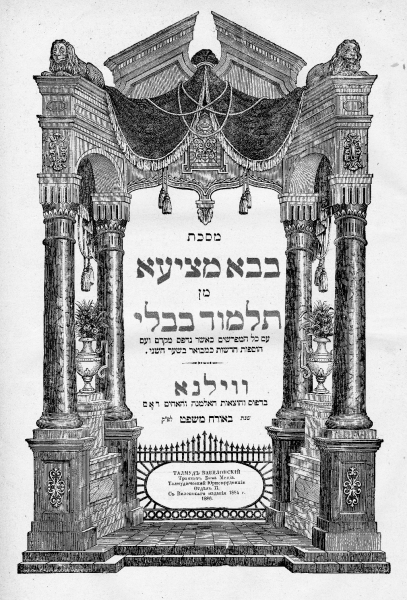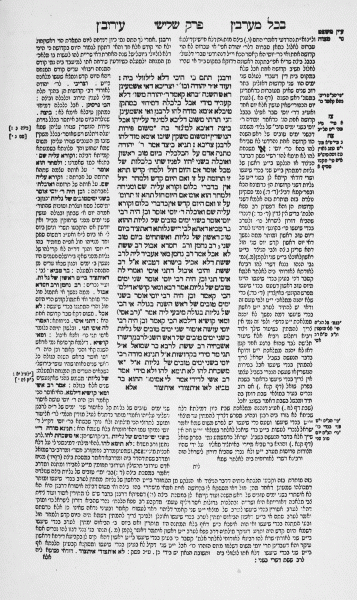Glossary
The entries selection comes from the book “Dictionary of Judaica” (2005), which was written by a group of authors led by Eva Kosáková . Entries were further processed by Jaroslav Kuntoš, Dana Veselská, Olga Sixtová, Michaela Scheibová and Lenka Uličná. The book can be purchased at our e-shop.
Talmud (Heb., lit. “teaching, study”)
A large body of text which contains the Oral Torah, i.e., the laws, ethical and philosophical teachings and traditions of the Jewish religion. The core of the Talmud is the Hebrew text of the Mishnah (Heb. repetition, i.e. of the Law), which was edited in about 200 CE and further elaborated and supplemented in the Gemarah (“ending” or “learning”), i.e. the Talmud proper, which is mostly in Aramaic. The two extant versions of the Talmud – the Jerusalem (Palestinian; concluded c. 400 CE) and the Babylonian (concluded c. 500 CE) – contain the teachings and traditions of the two main Jewish centres of the first centuries of the current era. The Talmud comprises several volumes, which are arranged according to the individual sections and tractates of the Mishnah. The text of the Talmud has been interpreted and annotated up until the present day, hence the basic text in a typical Talmud folio is provided with typographically distinct commentaries in the margins, particularly the commentary of the French Jewish scholar Rashi (Shlomo Yitzchaki), 1040–1105). There are several thousands of Talmud editions; in the Czech lands, the most frequent editions date from the 18th and 19th centuries, of which the Vilno-Romm edition has become the standard.
Back to list


![[subpage-banner/2_pamatkyaexpozice_1.png]](https://c.jewishmuseum.cz/images/subpage-banner/2_pamatkyaexpozice_1.png)


![[design/2013/Twitter.png]](https://c.jewishmuseum.cz/images/design/2013/Twitter.png)
![[design/2013/Instagram.png]](https://c.jewishmuseum.cz/images/design/2013/Instagram.png)

![[homepage-banner/incident.jpeg]](https://c.jewishmuseum.cz/images/homepage-banner/incident.jpeg)